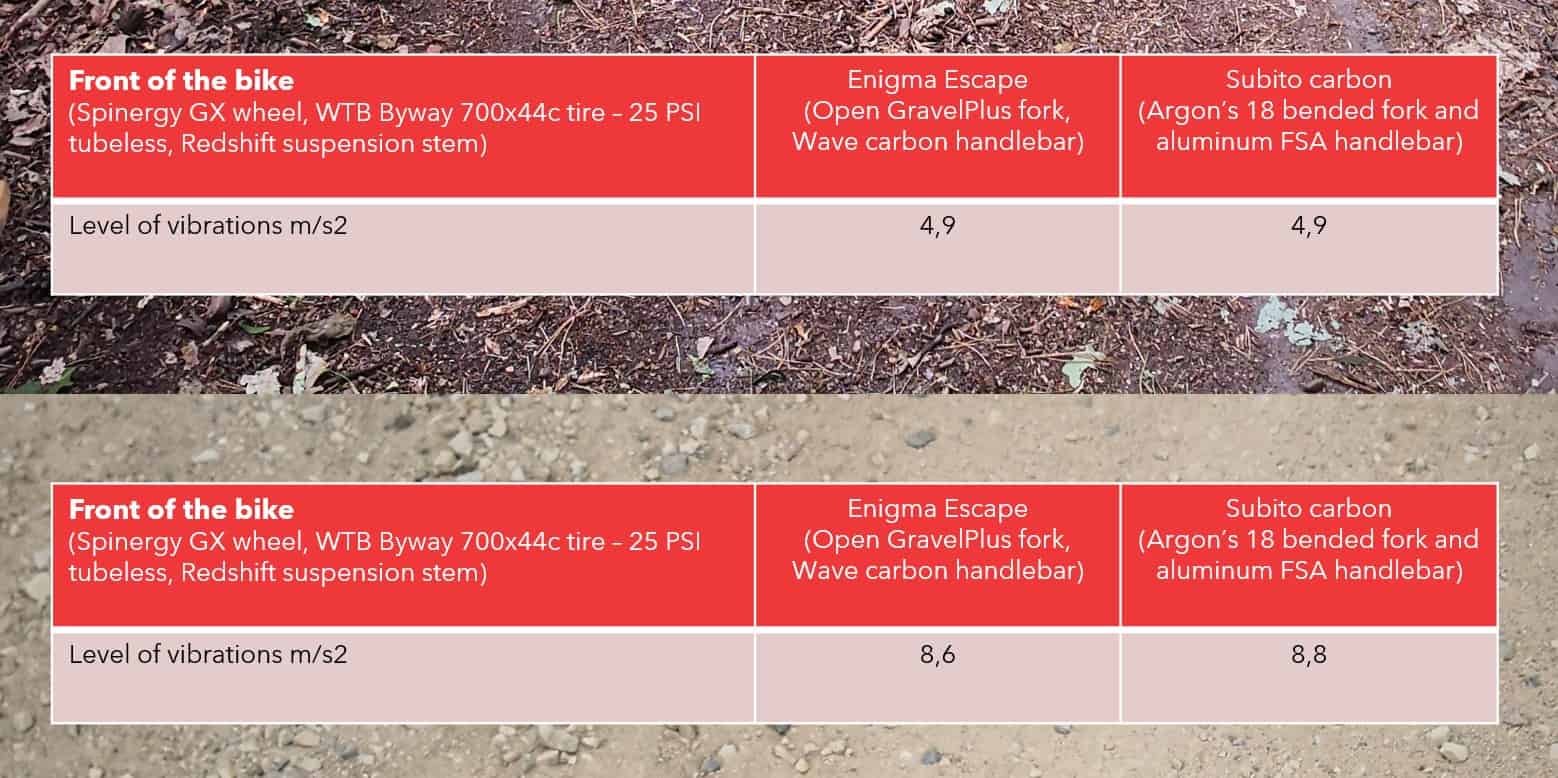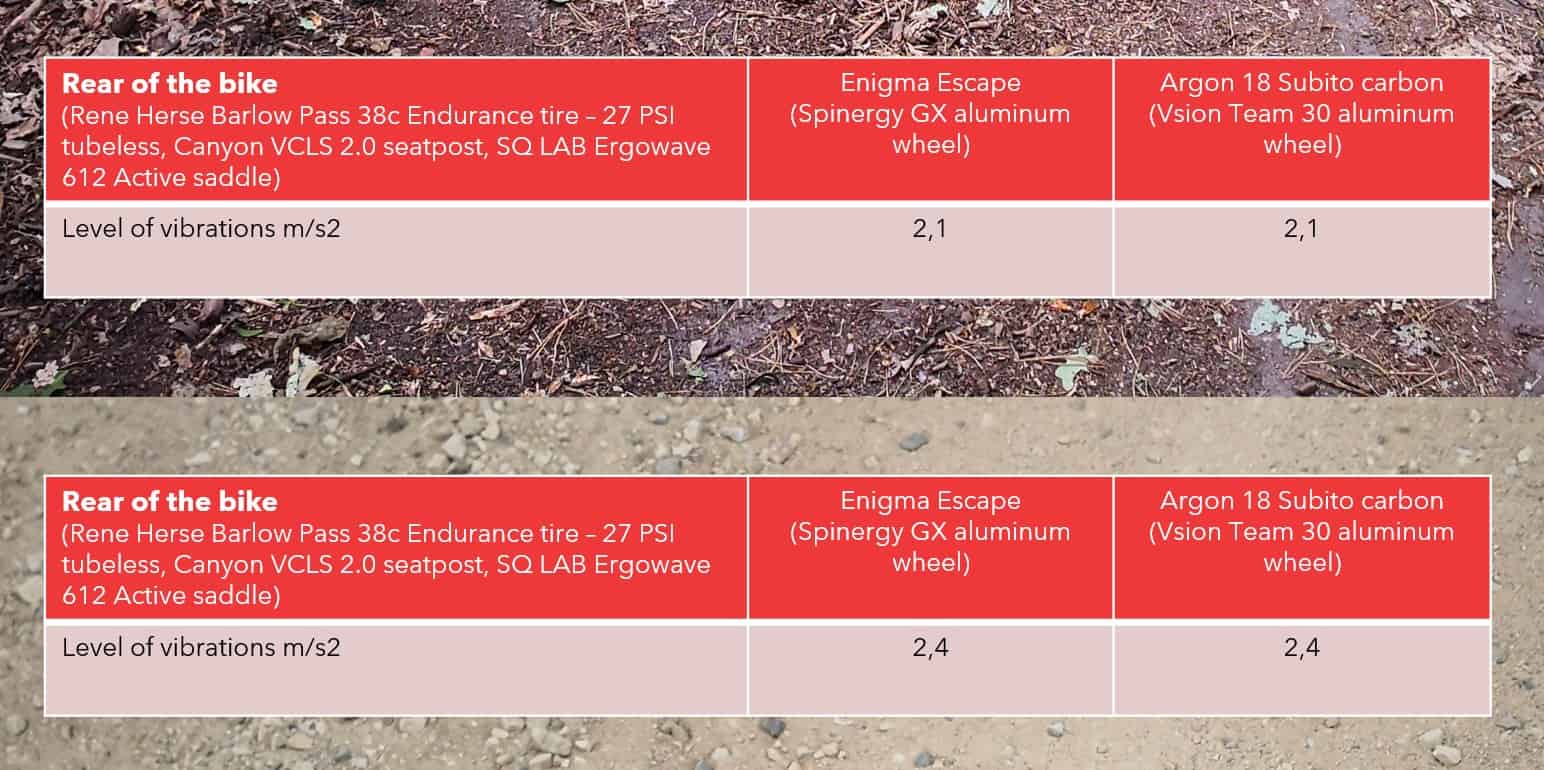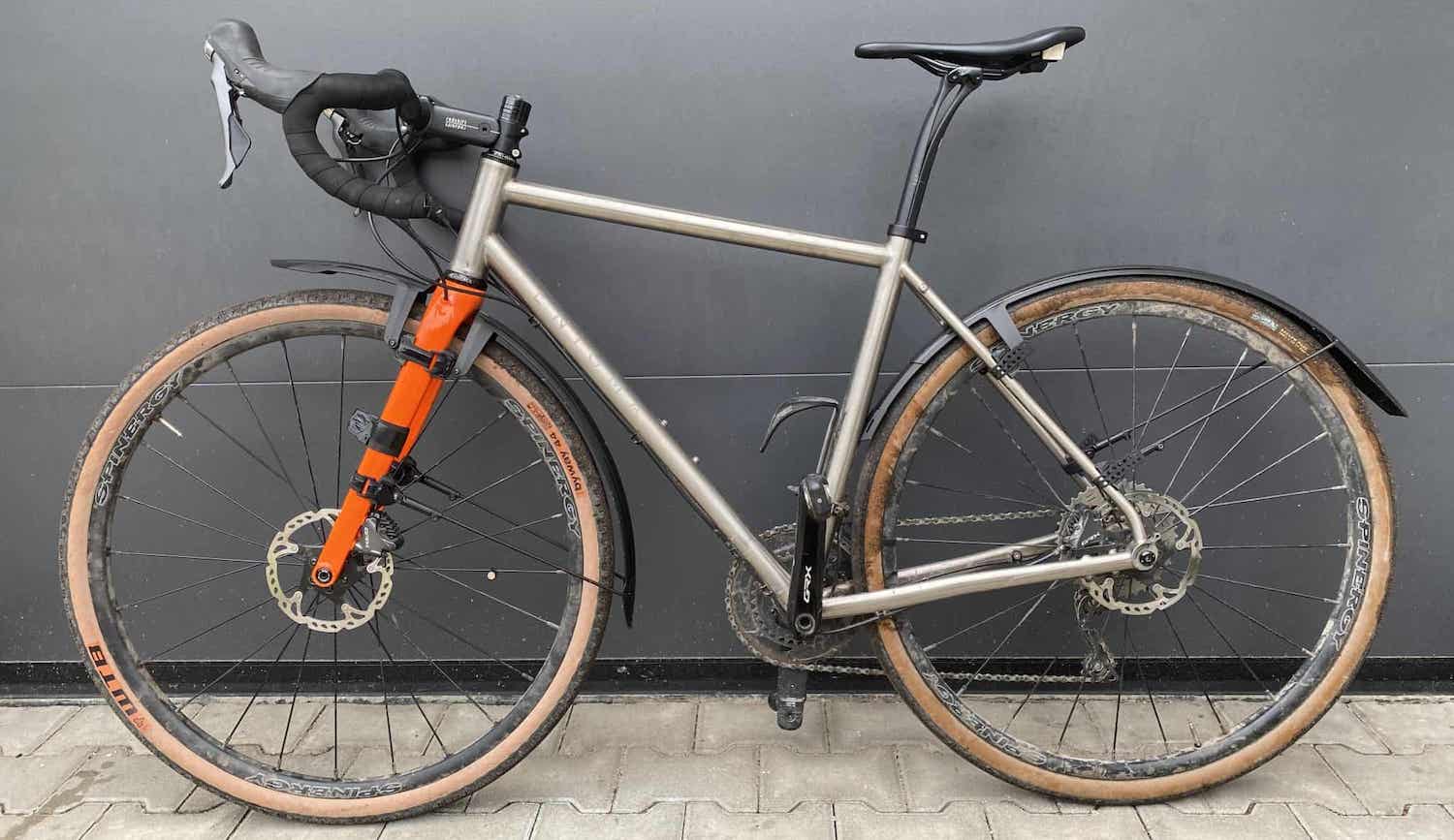Table of Contents
I’ve been testing various comfort-improving parts for a long time. Through my vibration testing, I’ve managed to find all the best-performing comfort parts, and ultimately, install them to my titanium benchmark bike.
I long thought my titanium frame was the best choice for comfort. And I really feel its magic. But then came the carbon Argon 18 Subito and that made me re-think things.
This article is the start of a series of articles where I will try to find the real difference between frame materials.
Titanium Is Best?
When I first rode the Subito, it felt much harsher than my titanium bike. However, I thought it would be an interesting experiment to transfer the comfort components from my titanium bike to see how the Subito rode after its upgrades.
With this done, it was clear – the harshness of the Subito was significantly reduced.
With the RedShift ShockStop stem and Redshift ShockStop seatpost, the Subito was feeling very smooth indeed. I call the ShockStop components the great equalizers because they can make almost any bike very comfortable to ride.
The next step was to measure the vibrations.
Bike Setup For The Vibration Test
My titanium benchmark bike was using an Open U-Turn carbon fork and Coefficient Wave handlebar, while the carbon Argon 18 Subito was set up with a Dark Matter carbon fork and FSA aluminium handlebar.
Otherwise, the other components of the bike were identical, including the Spinergy GX wheels, Redshift ShockStop stem, Ergon Allroad Pro carbon seatpost, SQlab 612 Ergowave Active saddle, WTB Byway 700C x 44mm front tire (25 psi) and Rene Herse Barlow Pass 700C x 38mm rear tire (27 psi).
Vibration Test Results
You can see my vibration measurement procedure & outdoor test courses HERE.
Instead of seeing a clear supremacy for the titanium bike, both frame materials were going neck and neck. The only difference was on the fast gravel road where the high-speed vibrations affected the Subito slightly more.
That said, the results were so close that I’m certain that putting the Open U-Turn fork and Coefficient Wave handlebar on the Subito would have put both bikes at the same comfort level.
To make things more interesting, I fitted Ergon Allroad Pro carbon seatposts to the two bikes. While these aren’t quite as comfortable as the Redshift ShockStop seatposts, they might just be able to discern comfort differences between the frame materials.
To my surprise, the results were identical again. And this time there was no comfort difference between bikes at all.
So does this mean that frame material, when supplemented with the best comfort-improving parts becomes irrelevant? It certainly seems that way.
But wait, vibration numbers only tell half of the story; I believe that subjective feelings are also important.
My Subjective Feelings of Titanium Bikes
I’ve said it many times before – titanium rides differently to me. It feels ‘springier’, and simply more forgiving to ride.
Meanwhile, carbon bikes often feel faster (as they are lighter) and stiffer (as manufacturers can use more material without adding too much weight). They also offer a high level of comfort when they are designed well.
But those qualities are served in a different manner because carbon bikes simply feel more ‘muted’ to me. Some riders prefer that feeling, but I think I prefer the ‘springy’ feel of metal more.
What’s Next?
This is only the beginning of understanding the impact of frame material on the comfort of a bike.
The Argon 18 Subito is a very interesting, very comfortable bike that made me think of testing this topic. It also has a very similar geometry to my benchmark bike.
The Subito is heavier than my benchmark titanium bike. This means that using the same air pressure in both bikes was not a fair comparison (I did that for the sake of the test, but usually I would use more air in the rear tire of the Subito).
Now I will try to compare similar gravel bikes, and this time I will use my new comfort lab to make more precise measurements.
The biggest challenge is to find bikes with different frame materials but very similar geometry. This is important so we can remove that variable. Once I’ve found these bikes, I can compare them with and without comfort-improving parts to determine if frame material really impacts comfort.
But for now, it seems that fitting comfort-improving parts will make a bike of any frame material comfortable to ride.









